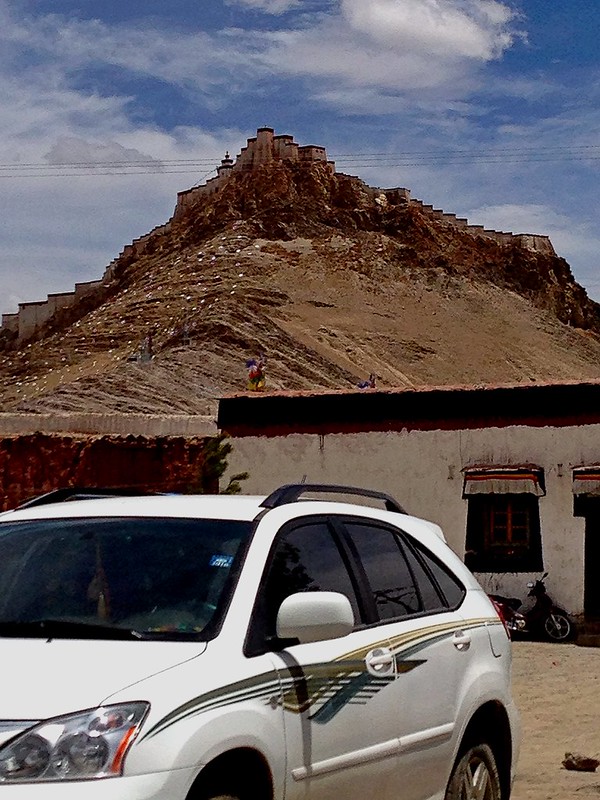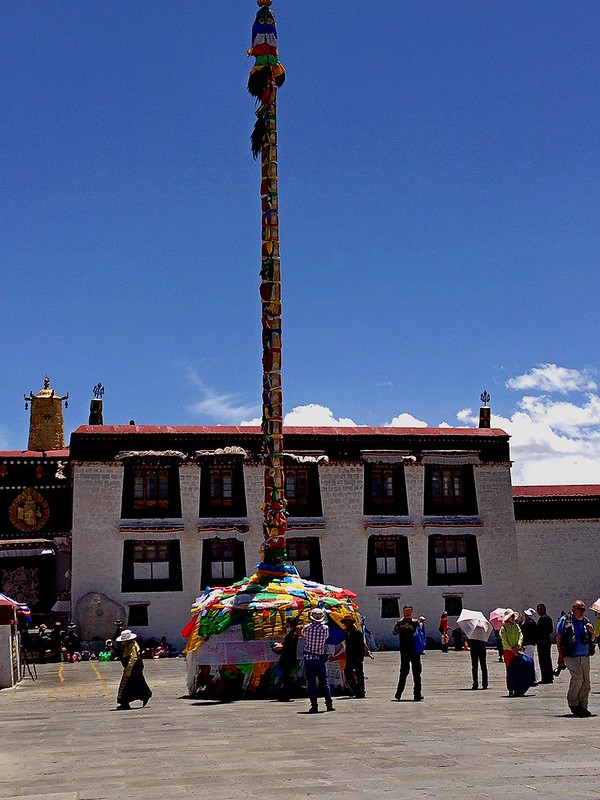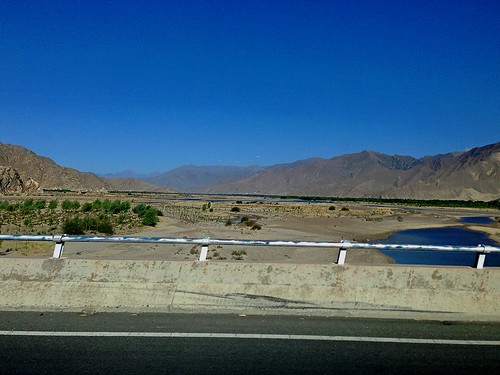The Brahmaputra river starts in Tibet and winds along the country for a bit before descending through the Himalayas and emptying into the Bay of Bengal. We had the privilege of driving back along the river from Shigatse to Lhasa.
I love taking photos with reflections in the water.
There are always mountains on both sides. Sometimes they are close by and sometimes far away.
There are a lot of trees here. I believe these are recently planted by the government.
The color of the water changed from blue to green to turquoise and teal.
At times we were driving along flat valleys along the river and at other times we were high above it.
There is a rail line being built between Lhasa and Shigatse. This bridge is part of the rail line.
An interesting and annoying aspect of driving in Tibet are the numerous checkpoints. At some of them, you have to produce your passport and permit to visit Tibet. Apparently they make copies of these things at these checkpoints. In a couple of cases, our guide - who handled most of the checkpoint duties - came back to get copies of the documents from the car because their computer was down. If you didn't have copies, you got to wait till it was up. If you had copies, you handed them over and moved on. Armed with foresight, he had brought a lot of copies. We did exhaust them all by the time we returned to Lhasa.
Other checkpoints didn't involve us, just the driver of the car. Speed limits are maintained by time limits. The driver picks up a paper at the first checkpoint and it is stamped with the location and time. He has x number of minutes to get to the next checkpoint. If he gets there before that time expires, he pays a fine because he was driving too fast. An example is 55 mins to drive 40 km. This means that there are lots of places where cars and buses are pulled over and waiting for time to pass so they don't get to the next checkpoint too early.
These impromptu rest stops are usually furnished with a vendor or two selling food and drink and someone looking to make a buck off the inhabitants of the vehicles. It is maddening. In one case we got to a checkpoint 2 mins early and the driver was told to slow down. But he wasn't fined. At the last of the checkpoints before Lhasa, they collect the piece of paper with its stamps. Paper - it is what rules the world!
As for food, we found tasty vegetarian food everywhere. Sometimes it was just stir fried vegetables with rice. In the mountains we found yogurt. In the valley, not so much. We found Indian food in Lhasa with a Tibetan twist.
Finally, we get to our last day in Tibet. Just as we were getting comfortable with the place, the altitude and enjoying the ride.






















































